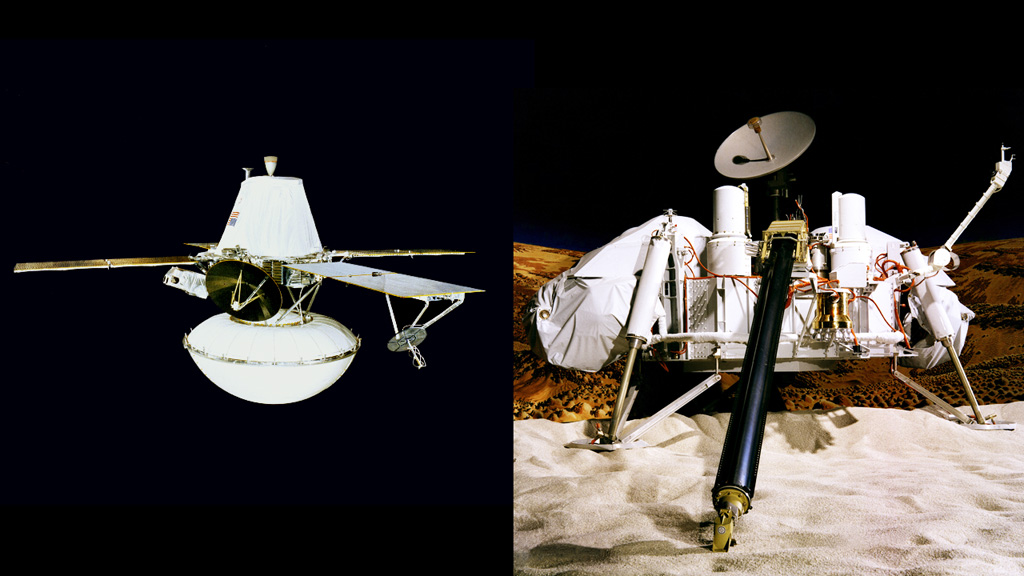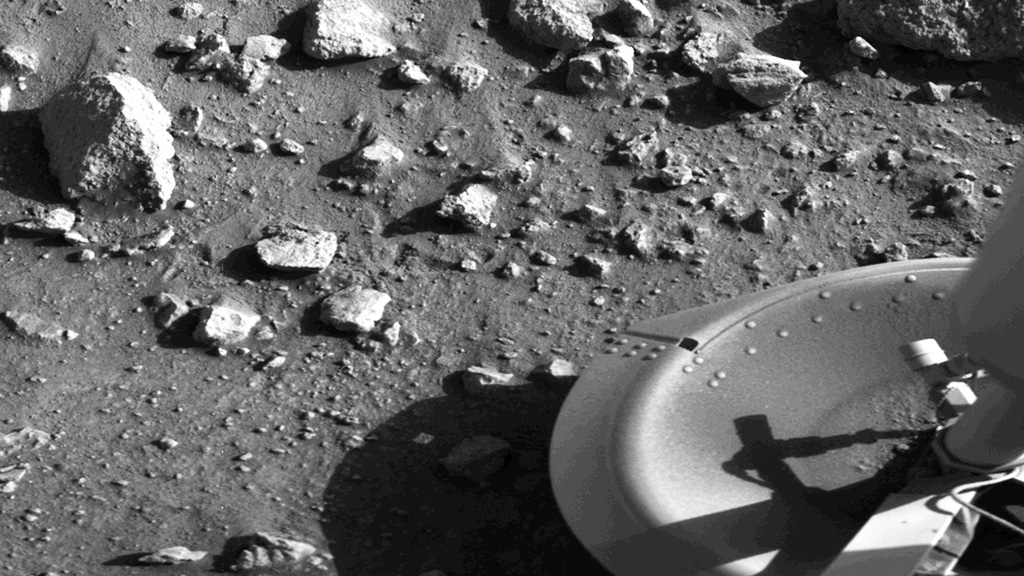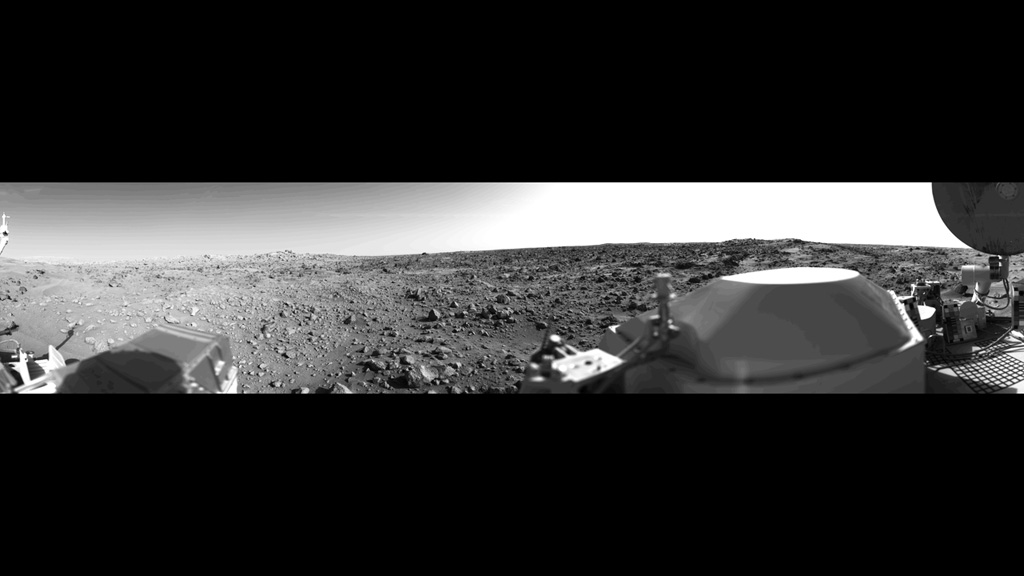Planets and Moons
ID: 12320

It was 40 ago, on July 20, 1976, that NASA's Viking 1 lander touched down on Mars, becoming the first U.S. spacecraft to successfully land on the planet. On that day, the 1,270-pound vehicle separated from its orbiter and began to descend through the Martian atmosphere traveling at around 500 mph. Its speed was slowed by the deployment of a parachute and the firing of three main retrorocket engines. The vehicle arrived safely at its landing site—a rock-strewn plain in the planet’s northern equatorial region—in the afternoon, Mars local time. The Viking 1 lander carried a number of science instruments to examine the composition of Mars’ atmosphere and surface, including a robotic arm that could scoop up soil samples. During its more than six years in operation, scientists collected hundreds of high-resolution images and important data that would pave the way for future Mars missions. Explore the images to learn more.




A Viking On Mars





Story Credits
Please give credit for this item to:
NASA's Goddard Space Flight Center
Cover image courtesy of NASA/JPL
Viking 1 launch image courtesy of NASA
Viking 1 orbiter model image courtesy of NASA
Viking 1 lander model image courtesy of NASA/JPL-Caltech/University of Arizona
Mars surface image courtesy of NASA/JPL
Mars panorama image courtesy of NASA/JPL
NASA's Goddard Space Flight Center
Cover image courtesy of NASA/JPL
Viking 1 launch image courtesy of NASA
Viking 1 orbiter model image courtesy of NASA
Viking 1 lander model image courtesy of NASA/JPL-Caltech/University of Arizona
Mars surface image courtesy of NASA/JPL
Mars panorama image courtesy of NASA/JPL
Short URL to share this page:
https://svs.gsfc.nasa.gov/12320
Keywords:
SVS >> App
NASA Science >> Planets and Moons
https://svs.gsfc.nasa.gov/12320
Keywords:
SVS >> App
NASA Science >> Planets and Moons







